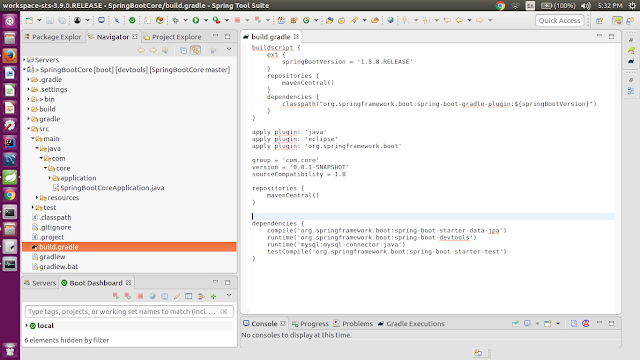How to use Spring Boot Gradle Multi Module Project in your application or add one spring boot gradle project/application in to another spring boot gradle project/application.
1) Create parent Spring Boot Gradle Project.
2) Create child Spring Boot Gradle Project.
3) in child project create settings.gradle file and configure your parent project
include ':SpringBootCore'
project(':SpringBootCore').projectDir = new File(settingsDir, '../SpringBootCore')
4) build.gradle of child project add parent project as dependencies
dependencies {
compile project(':SpringBootCore')
}
5) now run gradle clean build from your child project.
Note: Download source code from below link.
Parent Project
Child Project
1) Create parent Spring Boot Gradle Project.
2) Create child Spring Boot Gradle Project.
3) in child project create settings.gradle file and configure your parent project
include ':SpringBootCore'
project(':SpringBootCore').projectDir = new File(settingsDir, '../SpringBootCore')
4) build.gradle of child project add parent project as dependencies
dependencies {
compile project(':SpringBootCore')
}
5) now run gradle clean build from your child project.
Note: Download source code from below link.
Parent Project
Child Project

